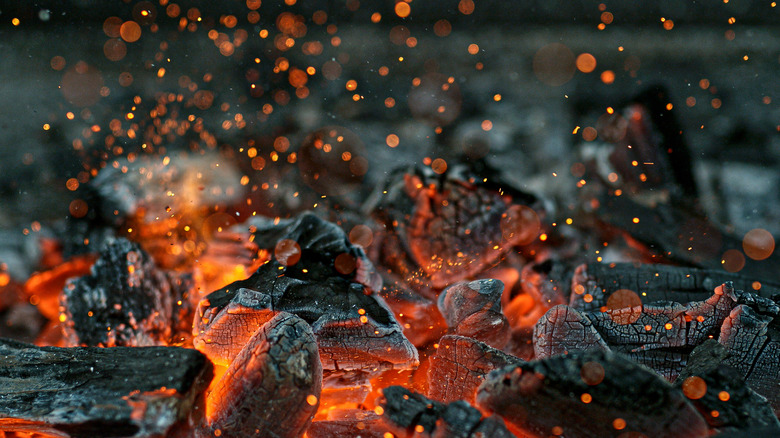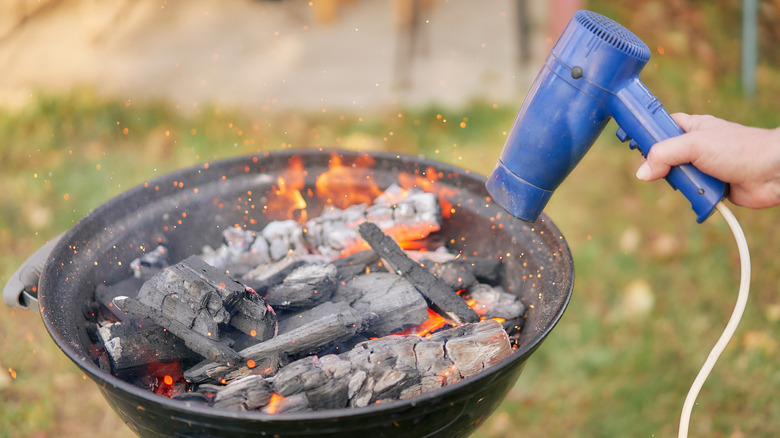The Non-Kitchen Tool That Can Stoke Your Grill's Stubborn Coals
You've been eagerly waiting, the minutes ticking like hours, for your grill coals to finally reach that ideal fiery state. But did you know there's a clever trick to expedite this process? When frustration starts to creep in, simply reach for an unexpected tool: your hair dryer. Point it toward the coals, and with a swift burst of air, watch as flames burst to life. This unconventional yet highly effective method of stoking your coals works because the blow dryer pushes air, or oxygen, into the fire, which helps fuel it.
It is, ultimately, causing those coals to heat right up. But is it safe? Well, it's not safe to ever aim electronics onto open heat. If you are going to aim your blowdryer at an open grill, make sure to warn your fellow barbecuers. Additionally, ensure you set the hair dryer to its lowest setting and point your face away from the fire. Backdraft or backdraught can occur when there's a sudden surge of oxygen, and it can cause the fire to literally explode.
Never try this without grill supervision and the proper fire safety gear, like a fire extinguisher and goggles. And watch out for the blow dryer's cord. This is a definite trip hazard. So, whether it's an impromptu backyard cookout or a planned feast with friends, knowing this trick could be your secret weapon for getting that grill going.
How to keep your coals burning
After harnessing the power of your hair dryer to ignite your coals, the next step is to discover the art of maintaining that roaring fire. Ensuring your coals keep burning consistently throughout your grilling session involves a few key strategies. One of the fundamental factors in regulating your coal's burn rate is controlling your airflow.
Most grills are equipped with air vents that allow you to adjust the oxygen supply to the coals. Opening the vents wide increases the airflow and intensifies the fire, while closing them partially restricts the oxygen, creating a milder flame. Finding the right balance is key to maintaining a steady heat source. Different parts of your grill can also offer varying heat levels, commonly referred to as "fire zones." By spreading out your coals, you create zones with different temperatures. This setup is ideal for accommodating various types of food.
A "hot" zone is directly over the coals and provides high heat for searing, while a "medium" zone offers moderate heat for cooking through thicker cuts and can use more indirect heat for cooking. Utilizing these zones strategically can prevent flare-ups and ensure even cooking. Positioning a heat-resistant barrier, such as aluminum foil, between the coals and your food can also prevent excessive charring or burning. This technique is particularly useful for delicate items like fish or vegetables. So, there you have it — some simple ways to avoid those pesky mistakes everyone makes when grilling.

